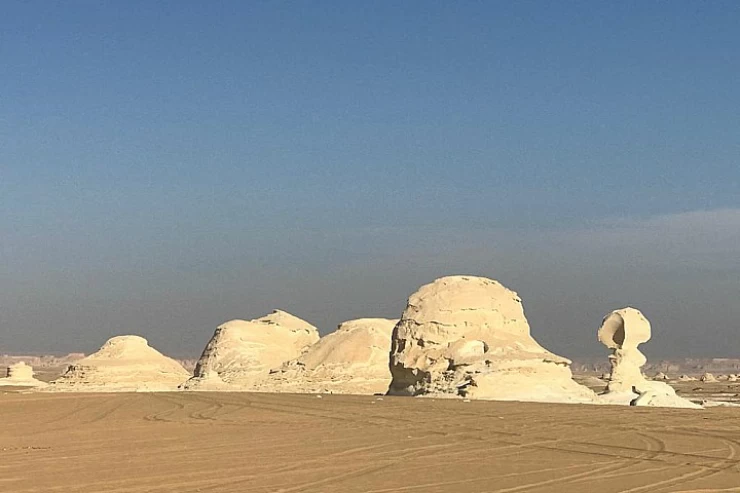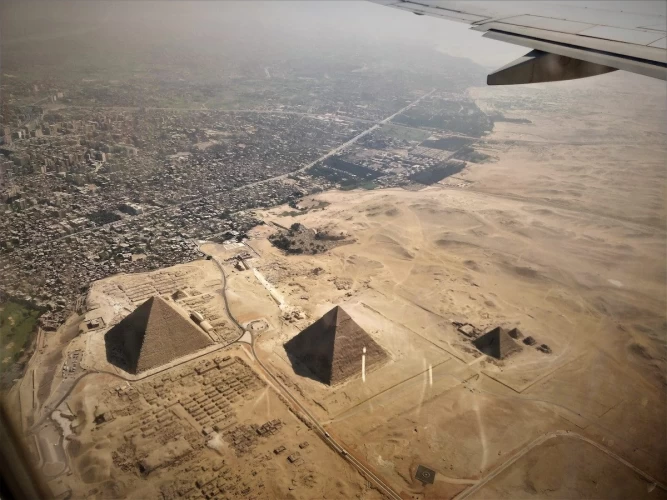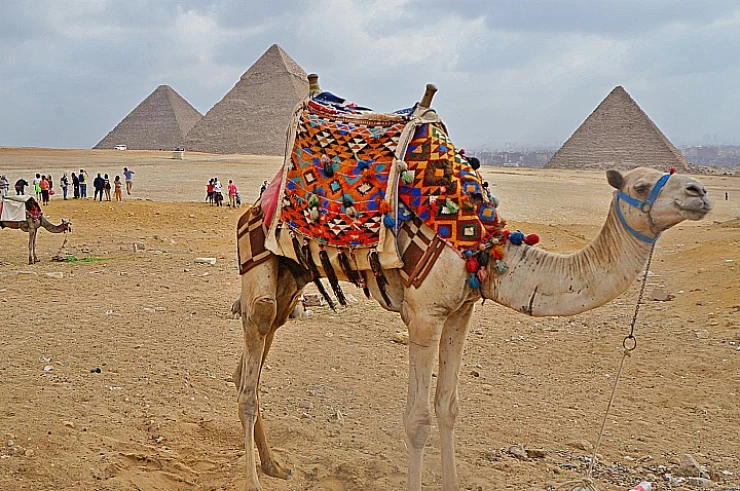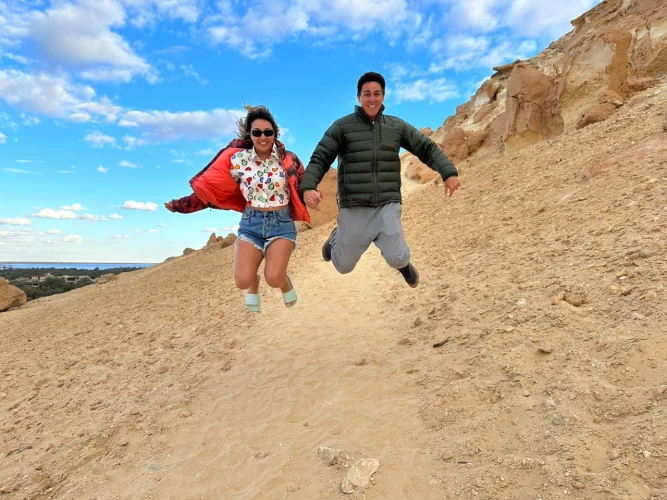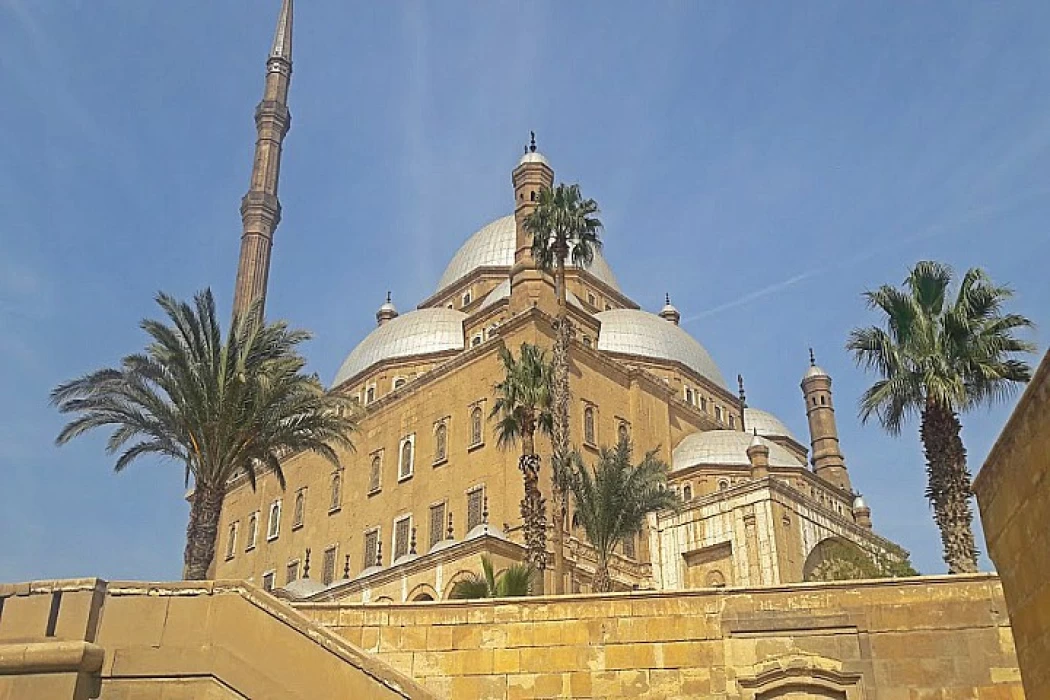
Salah El Din Citadel, no Cairo
Salah El-Din El Ayouby, líder de destaque e fundador da Dinastia Ayyubid, fundou A Cidadela de Saladino, a imagem icônica do Cairo islâmico, no final do século XII. Ao viajar para o Egito, a cidadela é uma parte essencial de todas os passeios do Dia no Cairo, especialmente a excursão islâmica do Cairo. É também uma das atrações imperdíveis do Cairo, que você terá a oportunidade de ver ao reservar uma de nossas Excursões no Cairo.
Saladino começou a construir a cidadela, mas morreu antes de terminá-la, então seu filho Ibrahim Pasha realizou seu trabalho, e foi o primeiro a governar o Egito a partir da cidadela.
Ele tem presenciado enormes eventos históricos através da história egípcia e foi por muitos séculos a sede do rei e de seu governo no Egito. Os ayubídeos, os mamelucos e alguns otomanos tiveram a vez de governar o Egito a partir da cidadela.
O Castelo Salah El-Din Al-Ayoubi é considerado um dos castelos militares mais luxuosos construídos na Idade Média, e é considerado um dos marcos mais importantes do Cairo islâmico, localizado no bairro "Castelo", em uma das colinas separadas do Monte Mokattam, na periferia do Cairo, a localização única que o tornou uma barreira. Consistentemente alto entre as cidades do Cairo e Fustat, era possível comunicar-se entre o castelo e a cidade no caso de qualquer cerco.
Saladino decidiu que o Cairo deveria ter uma cidadela fortificada para proteger a cidade contra futuros ataques estrangeiros inesperados, especialmente durante a ameaça dos cruzados, que estavam realizando campanhas militares em direção ao Oriente Médio durante este período. Ele encontrou muitas revelações nas cidadelas libanesas e sírias devido ao quão fortificadas e protetoras elas eram, reconhecendo a importância de ter uma cidadela maciça para proteger o Cairo, ele enviou todos os seus recursos para criar a estrutura militar.
Mesquita Muhammed Ali:
Quando Muhammed Ali chegou ao poder, ele estava determinado a remover todos os vestígios da influência dos Mamelucos, que controlaram o Egito por seis séculos consecutivos e demoliram seus palácios dentro da fortaleza. Muhammed Ali também construiu um dos marcos mais famosos do Cairo.
A espantosa Mesquita de Mohamed Ali ou a Mesquita do Alabastro foi construída em memória de um filho falecido, torres sobre o resto do complexo. Além disso, para esta enorme mesquita, a Cidadela também inclui, cheia de uniformes e armas da longa história do Egito, o Museu Militar Nacional, o Museu da Polícia e vários outros museus permitidos ao palácio de Muhammed Ali.
O castelo tem quatro portões, a antiga porta era conhecida como a porta de Mokattam, porque é adjacente à torre Mokattam, que data da era Otomana, e esta porta também era conhecida como a porta da montanha para supervisionar a porta da montanha Mokattam. Desde os períodos, era uma abertura retangular numa parede muito grossa em direção ao sul da torre Mokattam, e nesta porta havia uma placa memorial com o texto fundacional em turco no nome Yakon Pasha e a data de construção da porta e do palácio remonta a 1785 d.C.
Em 1827, Muhammad Ali Pasha começou a construir a nova porta a ser usada no lugar da porta inserida, que era a porta principal do castelo e foi criada por Nasser Salahuddin Al-Ayyubi em 1183. Rodas, em vez disso, ele construiu uma nova porta e abriu um caminho inclinado para facilitar o acesso e a descida do castelo. Esta estrada é conhecida hoje como a Rua New Gate ou a ferrovia da pedreira.
Quanto à seção do meio, uma menção veio em um dos livros do orientalista francês, "Paul Casanova" em 1894, no qual ele disse que esta seção seria chamada de "The Wastani", porque ele medeia as duas principais religiões com os Monstros Reais, a Qaitbay, e Diwan al-Ghuri, e alguns pesquisadores mencionaram que ele era conhecido como o Wastani Separa o vestíbulo da cidadela naval pública dos pátios onde se encontra a Mesquita Al-Nasir Muhammad Ibn Qalawun, e a Mesquita de Muhammad Ali Pasha.
Uma das importantes instalações militares que completaram o papel da cidadela na Idade Média, o muro que Salah Al-Din construiu ao redor do Cairo para se defender contra qualquer agressão externa, é o muro que foi recentemente descoberto. Depois que Salah al-Din (1171 - 1193 d.C.) governou o Egito, ele cuidou da construção da área Fora de Fatimid Cairo entre Bab Zuweila e a Mesquita de Ahmed Ibn Tulun, ela foi dividida em várias linhas, incluindo o Caminho Vermelho, que ainda é conhecido por este nome até hoje. Esta área é encimada pela Mesquita de Al-Saleh Tala'i ibn Razik, que é considerada o último vestígio da época de Fatimid no Egito.
Em Assuã, há um lugar muito legal chamado Toshka Project | Toshka Lakes. É um local especial onde você pode aprender sobre como as pessoas viviam há muito tempo no Egito. Você pode até se imaginar lá e ver todas as coisas incríveis que eles tinham no passado.
The idea of building the citadel arose to be the center of ruling Egypt; the citadel witnessed various events through centuries for being the headquarters of the rulers. The citadel is one of the most prominent sights in Islamic Cairo. It witnessed the formation of one of the most powerful armies in the Middle Ages. According to the future vision of Saladin, the citadel will be the centerpiece and the heart of the Egyptian government.
He was ambitious about forming a belt of walls surrounding Cairo and El Fustat to be a massive military territory. Secondly, Saladin was thinking about protecting the city from any potential foreign attack due to the advantage of being at one of the highest points in Cairo. One of the top activities in Cairo during the Egypt Christmas tours is visiting the Saladin Citadel, which offers you a panoramic view of the huge city of Cairo.
The strategic reality of the Saladin Citadel's location on the Mokattam Hills served as an advantage, which provided a favorable view of Cairo and facilitated the watch of any army coming nearer. The place was also picked for an important reason; it was quiet, standing somewhere high, hard for enemies to reach, as well as able to see all the easy directions for entering the area. Saladin constructed the citadel with the hope that it alone did not exist in a vacuum but rather formed part of a bigger defense system, which comprised walls around the city of Cairo and the city of Fustat.
The terraces of Saladin Citadel allow enjoying a bird's-eye viewpoint of Cairo. The citadel complex is also able to take one on a journey as the legacies of different rulers who shaped the architecture and design of the citadel are explored by any visitor. The citadel is also preferred by tourists, where they can fully understand history and architecture related to Islamic art. In addition to that, tourists enjoy visiting the citadel on a day tour to Cairo or on an Egypt Christmas tour, which is usually combined with visits to other historic places in Islamic Cairo. Saladin Citadel is, as much as it is a segment of Egypt’s military and political past, an art piece that has incorporated the vibrant aspects of Islamic art. This ensures that it is always on the tourist’s itinerary since the history of Egypt is long and thick.
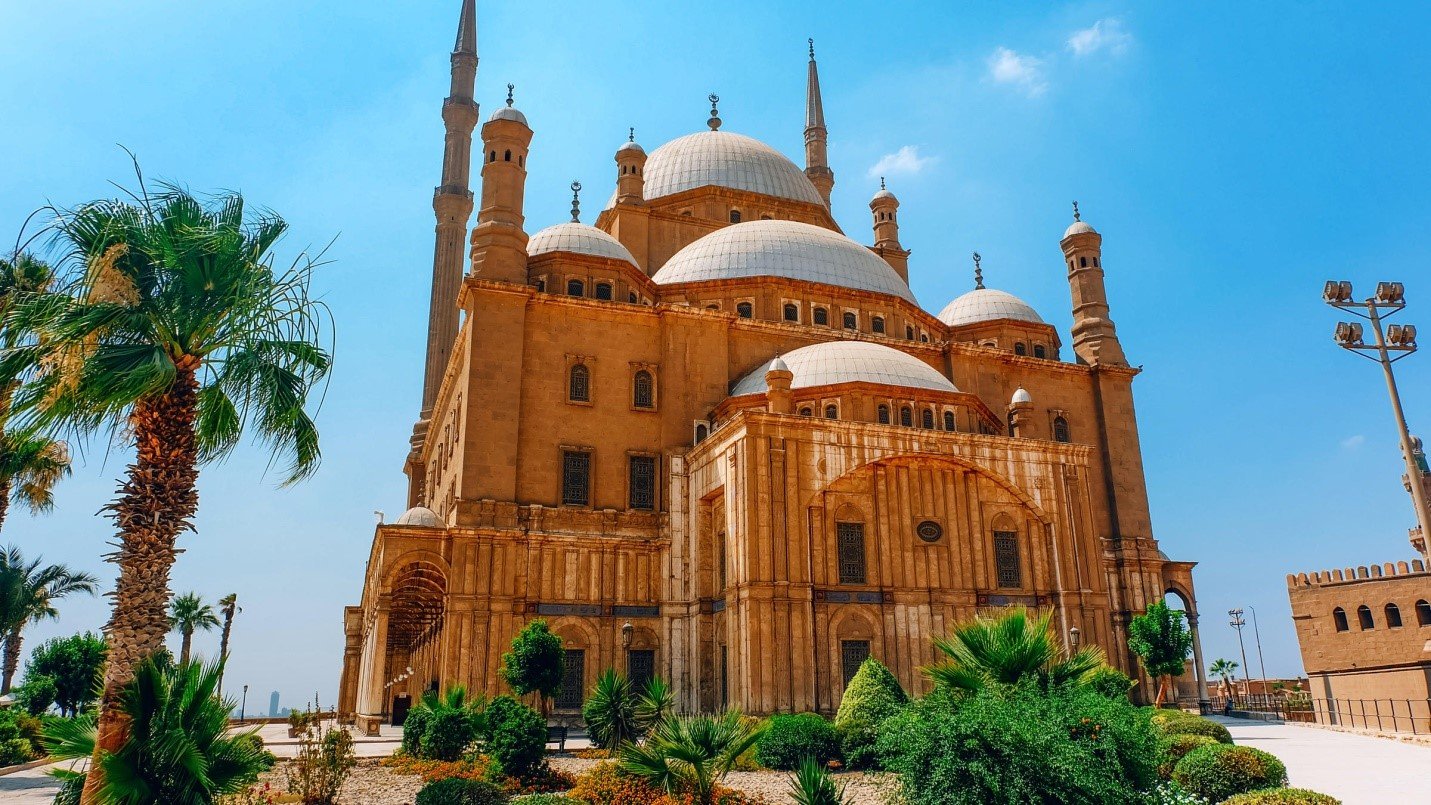
Salah Al-Din Al-Ayyubi Castle contains 4 mosques; they are Muhammad Ali Mosque, Madrasa of Al-Nasir Qalawun, and Mosque of Sulaiman Pasha Al-Khadi. The visit to the citadel will allow you to live a new experience with the art of Islamic architecture. The castle includes a military museum, a vehicle museum, and the Garden Museum, which makes the tour to the citadel one of the best tours besides Nile cruise tours because of the unique artifacts and the pieces of art.

The castle encompasses four gates, one of the gates known as “the gate of the mountain” for being on the hills of El Mokkatam mountain. This door holds the name of Yakon Pasha in the Turkish language and the date of the construction of 1785. You can imagine the art of the interior castle that witnessed many ages and rulers from different backgrounds and the artistic pieces and decorations included.
Muhammed Ali Pasha constructed another door in 1827 to be used as a new gate for the place instead of the door that was constructed by Saladin Al Ayuubi in 1183. The new door has also a leading, paved, sloping path to make reaching the castle easier. Recently, the new door or gate of the citadel is known as New Gate Street or the quarry railway.
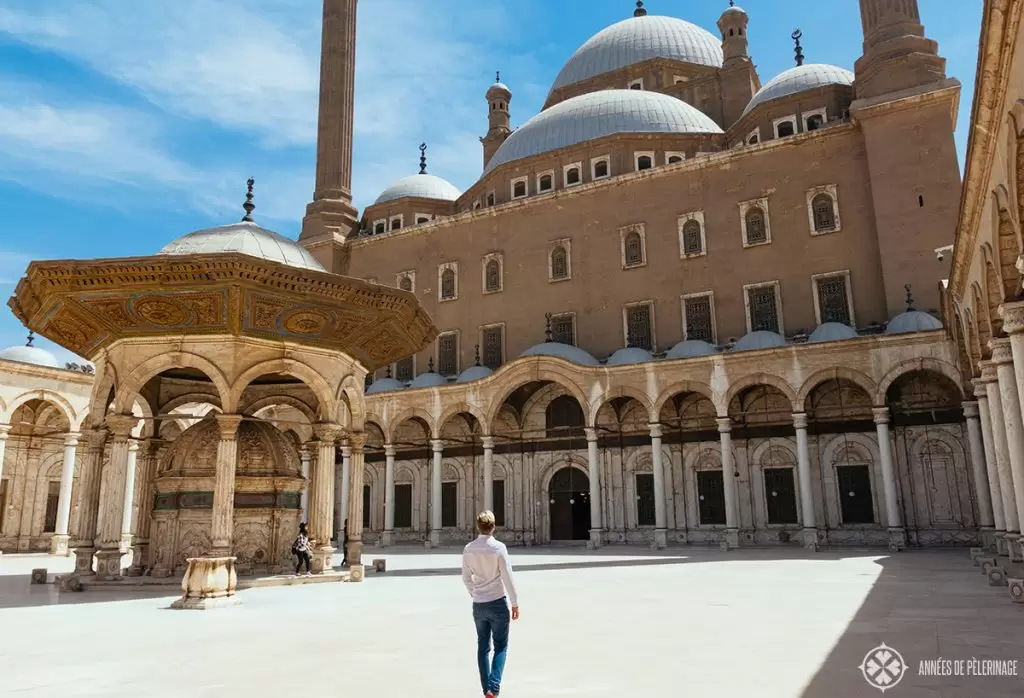
This is one of the most popular sights in Egypt and is located inside the citadel of Saladin in Cairo. The mosque also has another name, "Alabaster Mosque." This is due to the paneling of the mosque with the precious stones of marble, starting from the interior design to the walls. One of the reasons behind making Muhammed Ali’s Mosque is one of the best mosques to see during your Egypt Luxury Tour to see the art of Islamic architecture. The mosque also has a unique advantage with its two minarets that reach the highest point of 84 meters. Visiting the Mosque and the Castle is one of the most attractive for tourists from around the world and even coming from different ports in Egypt, like excursions from Sokhna Port, to enjoy spending time and filling their souls with beauty.

Al Gawhara Palace, also known as the "Jewel Palace," is a historic site located within the Citadel of Cairo, Egypt. Here are some key points about this remarkable structure. Visiting Al Gawhara Palace provides a glimpse into Egypt's past and allows for an appreciation of the artistic and architectural heritage of the Mamluk era.
Al Gawhara Palace was built during the reign of Sultan Al-Ghuri in the early 16th century (around 1503-1517). It served as a royal residence and an important center for governance. The palace showcases a blend of Islamic and Mamluk architectural styles, characterized by intricate decorative elements, beautiful arches, and ornate details.








